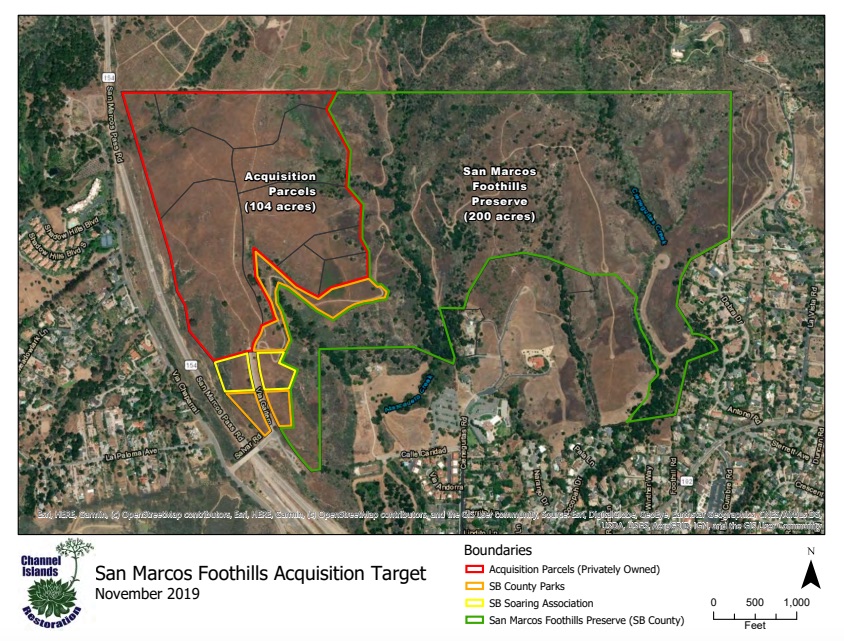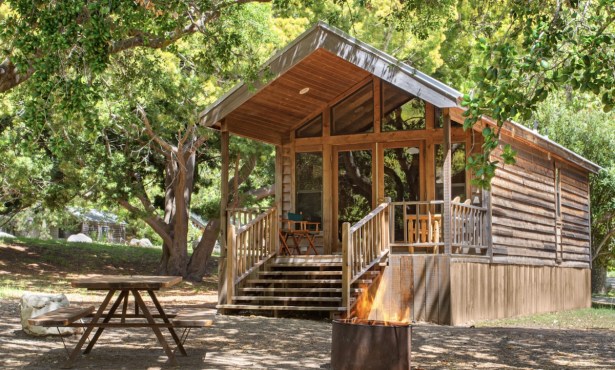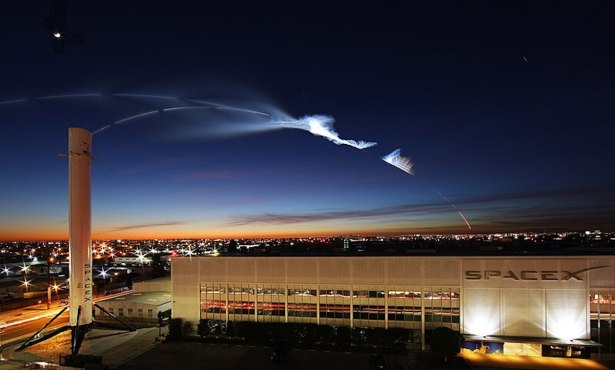Santa Barbara Environmental Groups Oppose Housing Development on San Marcos Foothills Preserve
Eight New Luxury Homes Slated Next to Biologically Rich Grassland Habitat

Fifteen years after its approval by Santa Barbara County, a housing development on the San Marcos Foothills is set to begin construction. For the developers, it’s the fruition of a project modeling high standards of compromise, patience, and environmental sensitivity. For local environmental groups, it’s a threat to a biologically rich grassland habitat — and a call to action to preserve the area forever.
The development — referred to as the “Upper Preserve” or “West Mesa” by the developers, the Chadmar Group — would consist of eight multimillion-dollar luxury homes on the mesa between the San Marcos Foothills Preserve and Highway 154, an area that burned during last year’s Cave Fire. The land was approved for development in 2005 at the same time that its owner, in a compromise with the San Marcos Foothills Coalition and other environmental groups, donated 200 adjacent acres for the creation of the preserve.
Chadmar CEO Chuck Lande considers the project a shining example of balance between conservation and development. He points out that while the original property (including the preserve) totaled over 377 acres, housing will ultimately occupy 10 percent of that. That includes not just the upcoming eight homes on the West Mesa, but 12 others Chadmar has almost finished building: seven luxury homes and five affordable condos off Cieneguitas Road, just south of the preserve. Area zoned for development around the homes will remain set aside as a mix of public and private open space.
Get the top stories in your inbox by signing up for our daily newsletter, Indy Today.
To Lande, this speaks volumes. “To preserve 90 percent of any property without massive fundraising or government funds is a model that should be followed,” he said. “Setting aside one of [every] four homes at the same time as affordable is extremely rare.”
Some environmental groups argue the land should stay undeveloped entirely. Like the Foothills Preserve, the West Mesa provides native grassland habitat, movement corridors, and hunting and breeding grounds for a wide range of mammal and bird species — including rare species like the grasshopper sparrow and white-tailed kite — in a region where similar grasslands have already transformed into housing or avocado orchards.

The conditions for the development’s approval take habitat into account, requiring the replanting of twice the area of grassland impacted, low-intensity nighttime lighting for the sake of nocturnal species, postponement of construction if any breeding birds are found nesting within 500 feet in pre-construction bird surveys, and other measures.
However, Elihu Gevirtz, senior ecologist at Channel Islands Restoration, pointed out that any level of development will invariably displace plants and animals currently living there. He predicts some number of individual animals, perhaps even entire species, would leave the area. “The white-tailed kite, for example … it hunts for voles and mice,” Gevirtz says. “If you build on that space, at a certain point they just leave because their food is not there.” Gevirtz’s concerns find footing in studies of insular biogeography, which show that decreasing the size of a habitat typically reduces the number of species, not just individual organisms, that may persist there.
Will developing 10 percent of a 377-acre habitat significantly reduce its capacity to support its current wildlife population? Gevirtz said no one could predict the exact impact the project would have, but his desire was to play it safe: “It’s great that there’s a lot of open space, and the development is well-designed, but I suspect that having those eight homes there is going to change it dramatically.”
Dr. Lisa Stratton, director of Ecosystem Management at UCSB’s Cheadle Center, warns of the impacts of even a limited building area. “The proposed development ‘sounds good’ with the apparent small development areas,” she said, but even this strategy “creates a lot of fragmented pieces that will be impacted by horse corrals and other uses that break up wildlife use and value, [and] add invasive plants and human disturbance day and night.”
According to Gevirtz, Chadmar may have construction permits in hand by early November and begin construction in December. Channel Islands Restoration currently leads an effort to raise $5.5 million to buy the remaining home sites before then, along with the Santa Barbara Audubon Society, Botanic Garden, and Environmental Defense Center. But they’re far short of that goal at $62,530. Gevirtz suspects the project has fallen off the public radar after going quiet for so long, but he believes opposition will increase with awareness.
Lande expressed Chadmar’s willingness to further discuss the possibility of purchase, but he made clear that the ultimate price of the property would take into account the opportunity cost to the owner of leaving so much land undeveloped.
Every day, the staff of the Santa Barbara Independent works hard to sort out truth from rumor and keep you informed of what’s happening across the entire Santa Barbara community. Now there’s a way to directly enable these efforts. Support the Independent by making a direct contribution or with a subscription to Indy+.




You must be logged in to post a comment.